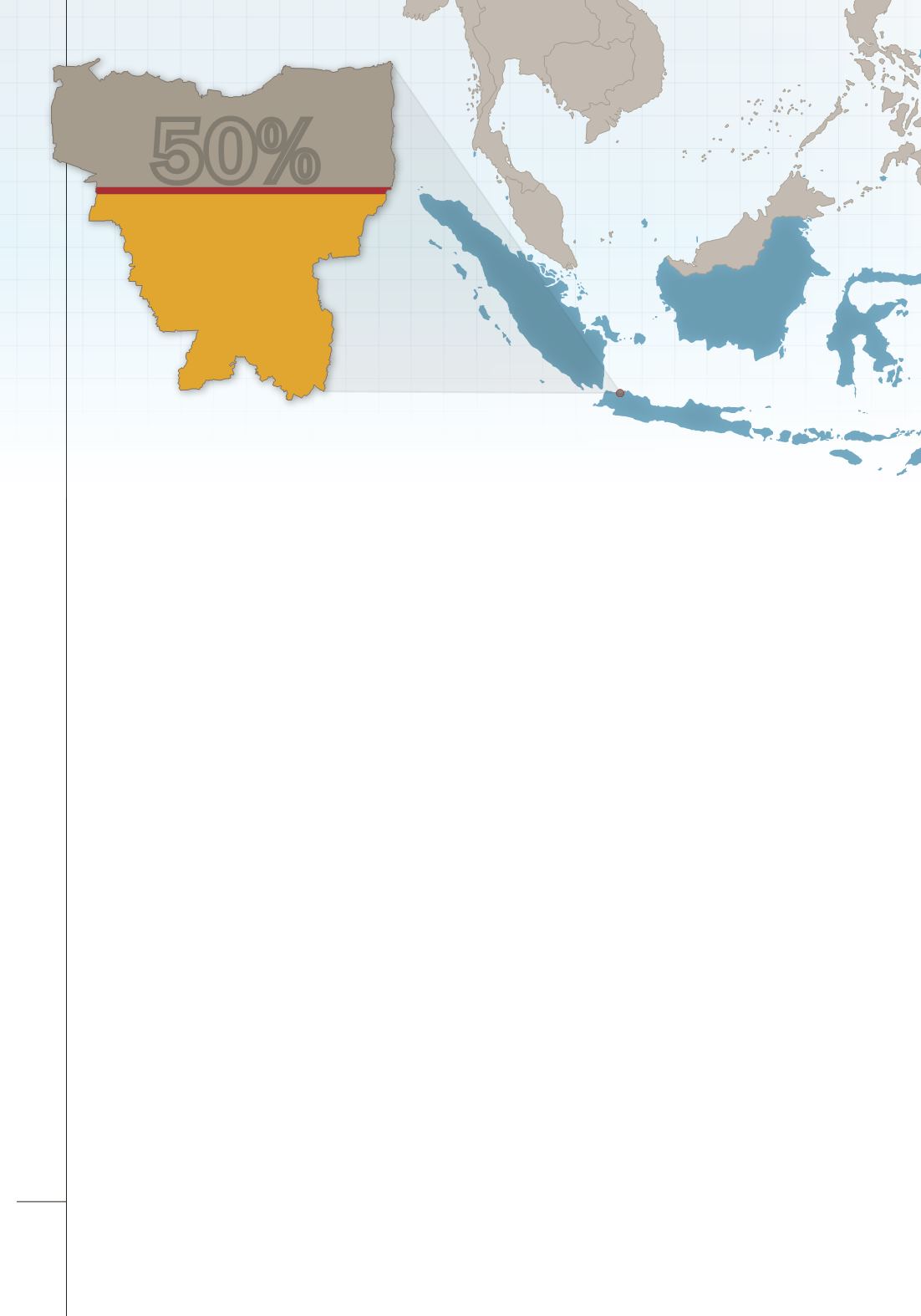
THAILAND
CAMBODIA
LAOS
VIETNAM
MAYANMAR
MALAYSIA
MALAYSIA
PHILLIPPINES
SINGAPORE
SOUTH CHINA OCEAN
INDIAN OCEAN
INDONESIA
APPROXIMATELY
50% OF
JAKARTA’S RESIDENTS
WERE
FACING THREE MONTHS
WITHOUT ACCESS TO
GAS FOR COOKING
AND HEATING.
50%
Jakarta
to compact, which lowers the seabed, taking the
platform along with it.
Now, the Lima Flow Station wasn’t going to
disappear overnight, but the seabed subsidence
was beginning to bring the platform too close
to the water. Offshore platforms are built
to stand high above the ocean, protecting
the structure, equipment, and workers from
potentially destructive wave force. The space
between the average wave height and the
platform – called an air gap – must allow a
sufficient separation between the water and the
station. Allowing Lima’s air gap to fall below
that distance could seriously compromise the
safety of the flow station’s production platform,
compression platform, living quarters platform
and bridges – especially if a strong storm caused
significant waves.
Lima will be retired in 2026, but Alam
knew that Pertamina EP couldn’t wait that long
to fix the problem. He consulted with Jamsaton
Nababan, Vice President of Surface Facilities.
After some deliberation, Alam and Nababan
came up with a solution to the problem: Raise
Lima Flow Station by four meters.
Pertamina EP hired its main contractor
and a project management firm to carry out
what became known as the Lima Subsidence
Remediation Project. The two companies got
started right away and, for a moment, it seemed
that the sinking station problem would be fixed
without issue.
Shortly after the project got underway,
Alam was presented
with an even more difficult challenge:
To safely lift the flow station’s most critical
platforms and facilities, they would have to
shut down several pipelines connected
to it, severely limiting the gas supply for
approximately three months.
This was the last thing that Alam wanted to
hear. Pertamina EP is the main supplier of gas
to West Java, including the big city of Jakarta.
It supplies gas to Kujang’s fertilizer plant,
a refinery in Balongan, and several power
stations. The Lima field also supplies natural
gas to millions of residential consumers, with
many depending on it for their electricity.
Disrupting the gas supply for a mere three
days would be a problem. Three months
would be a disaster.
To further complicate matters, Pertamina
EP is a government-owned company. Any
accidents or disruption in gas supply would
have political implications. And, of course,
shutting down the flow of product would cause
them to lose profit.
In other words, the pipelines had to keep
running no matter what.
FORMING A SOLUTION
Rakhmat Sani, a sales engineer at T.D.
Williamson (TDW), got the call from
Pertamina EP. They explained that the project
needed TDW’s expertise in a pipeline isolation
project, specifically the installation of several
I N N O V AT I O N S • A P R I L - J U N E 2 0 1 4
16


